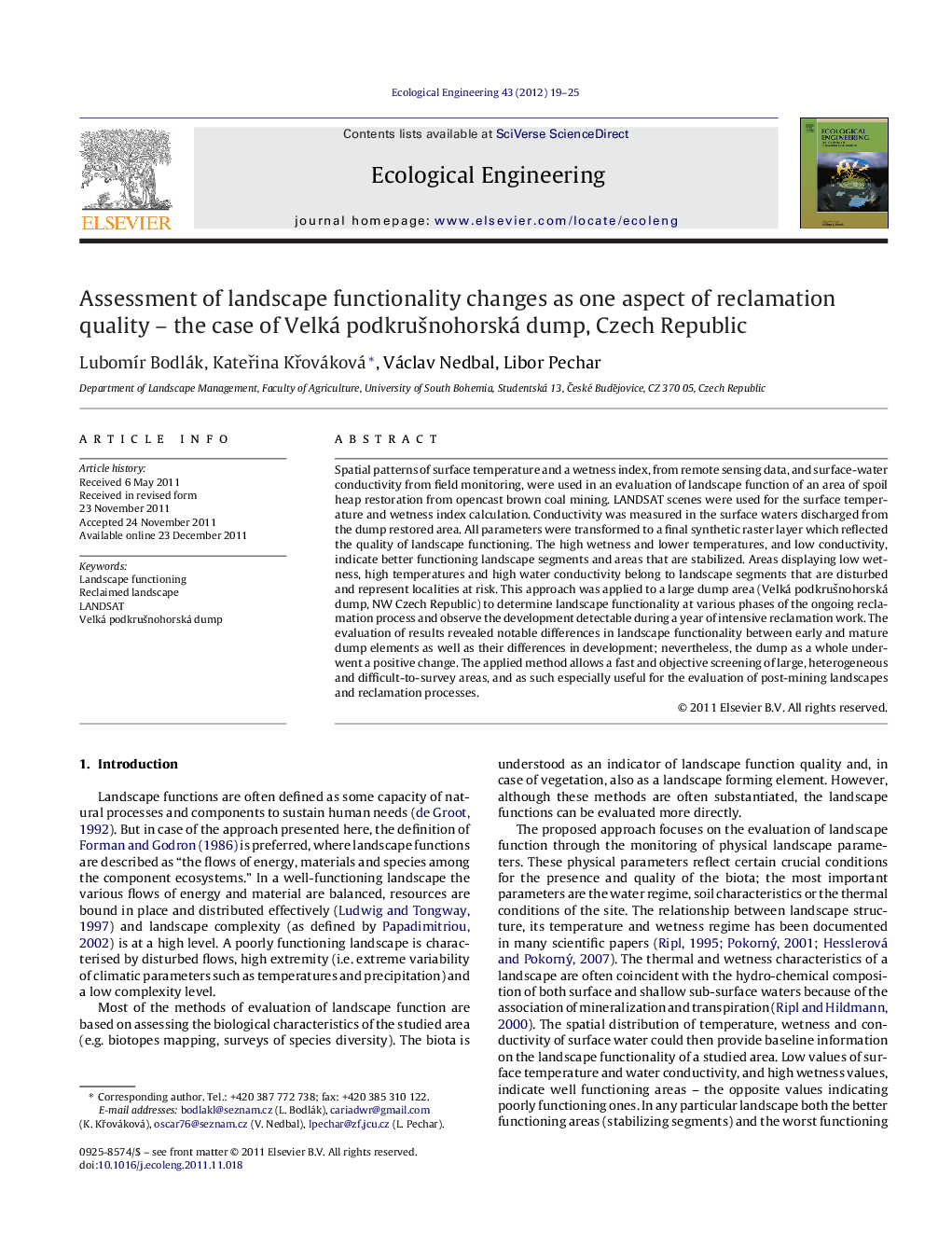| Article ID | Journal | Published Year | Pages | File Type |
|---|---|---|---|---|
| 4390057 | Ecological Engineering | 2012 | 7 Pages |
Spatial patterns of surface temperature and a wetness index, from remote sensing data, and surface-water conductivity from field monitoring, were used in an evaluation of landscape function of an area of spoil heap restoration from opencast brown coal mining. LANDSAT scenes were used for the surface temperature and wetness index calculation. Conductivity was measured in the surface waters discharged from the dump restored area. All parameters were transformed to a final synthetic raster layer which reflected the quality of landscape functioning. The high wetness and lower temperatures, and low conductivity, indicate better functioning landscape segments and areas that are stabilized. Areas displaying low wetness, high temperatures and high water conductivity belong to landscape segments that are disturbed and represent localities at risk. This approach was applied to a large dump area (Velká podkrušnohorská dump, NW Czech Republic) to determine landscape functionality at various phases of the ongoing reclamation process and observe the development detectable during a year of intensive reclamation work. The evaluation of results revealed notable differences in landscape functionality between early and mature dump elements as well as their differences in development; nevertheless, the dump as a whole underwent a positive change. The applied method allows a fast and objective screening of large, heterogeneous and difficult-to-survey areas, and as such especially useful for the evaluation of post-mining landscapes and reclamation processes.
